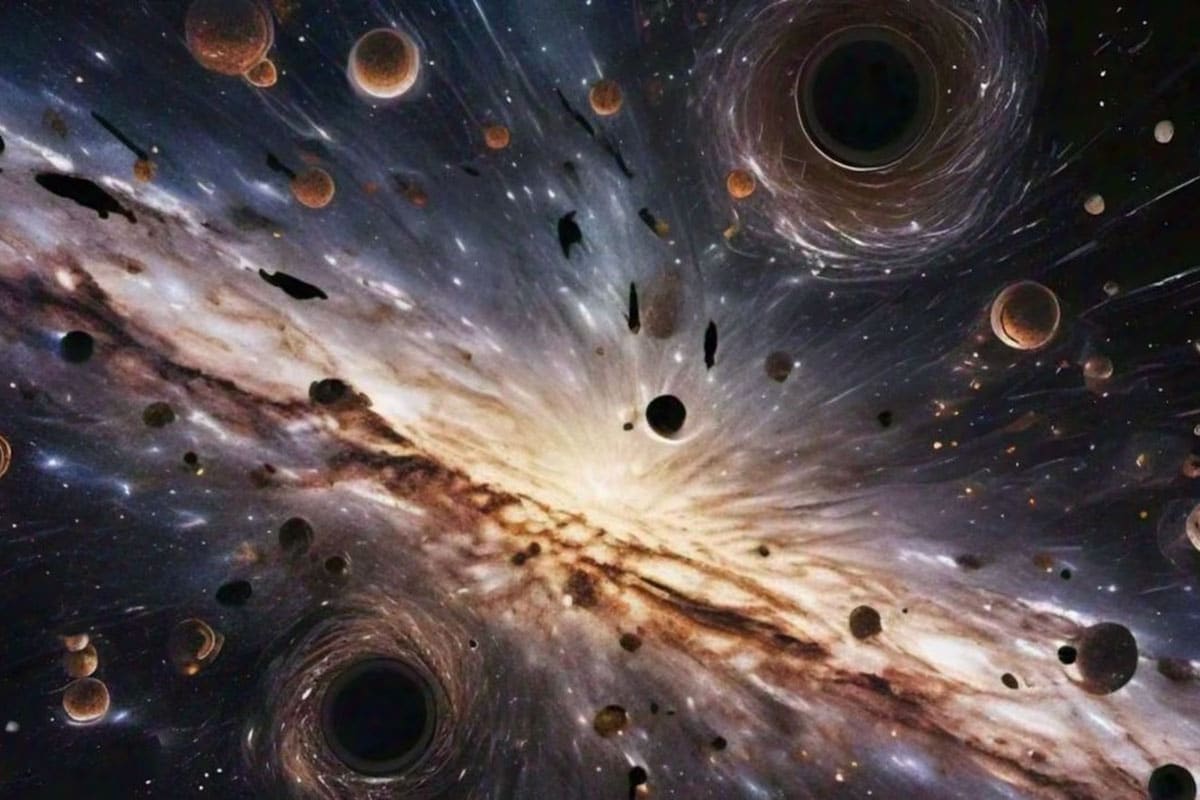In a groundbreaking discovery, astronomers have detected a massive swarm of black holes moving through our Milky Way galaxy. This extraordinary finding sheds new light on the formation and evolution of stellar streams, offering valuable insights into the hidden secrets of our cosmic neighborhood.
Massive black hole swarm discovered moving through Milky Way galaxy, scientists report

At the heart of this cosmic revelation lies Palomar 5, a stellar stream stretching across 30,000 light-years of space. Located approximately 80,000 light-years from Earth, this celestial wonder has captured the attention of scientists worldwide. Unlike typical globular clusters, Palomar 5 exhibits a unique characteristic : a long, sprawling river of stars that spans more than 20 degrees of the sky.
Researchers, led by astrophysicist Mark Gieles from the University of Barcelona, have meticulously studied Palomar 5 using advanced N-body simulations. These simulations recreate the orbits and evolutions of individual stars within the cluster, offering a glimpse into their cosmic journey. The results have been nothing short of astounding.
The team's findings suggest that Palomar 5 harbors an unexpected treasure trove : a swarm of over 100 stellar-mass black holes. This discovery challenges previous assumptions about the composition of globular clusters and opens up new avenues for understanding the formation of stellar streams.
Black holes : The architects of stellar streams
The presence of black holes within Palomar 5 appears to play a crucial role in shaping its unique structure. Gravitational interactions between stars and black holes act as cosmic slingshots, propelling stars out of the cluster and into the tidal stream. This process occurs more efficiently for stars than for black holes, gradually altering the cluster's composition.
Remarkably, the simulations revealed that black holes make up more than 20 percent of Palomar 5's total mass. This proportion is approximately three times higher than initially expected based on the cluster's stellar population. Each of these black holes boasts a mass of about 20 times that of our Sun, originating from supernova explosions during the cluster's early stages.
The implications of this discovery extend far beyond Palomar 5. Scientists now believe that other globular clusters may share a similar fate, eventually dissolving into stellar streams. This revelation provides valuable insights into the life cycle of these cosmic structures and their role in shaping our galaxy.
A cosmic Rosetta Stone
Palomar 5's unique characteristics make it an invaluable tool for understanding the formation and evolution of stellar streams. As Gieles explains, "Palomar 5 is the only case, making it a Rosetta Stone for understanding stream formation." This celestial oddity offers astronomers a rare opportunity to study the mechanisms behind these cosmic rivers in unprecedented detail.
The research team's simulations paint a fascinating picture of Palomar 5's future. In approximately one billion years, the cluster is predicted to dissolve completely. Just before this final act, the cluster's remnants will consist entirely of black holes, silently orbiting the galactic center.
This finding has significant implications for our understanding of black hole swarms detected in ancient star clusters in the Milky Way. It suggests that globular clusters may be prime locations for observing black hole collisions and searching for elusive intermediate-mass black holes.
Implications for future research
The discovery of this black hole swarm in Palomar 5 opens up exciting new avenues for astronomical research. Here are some key areas that scientists are eager to explore further :
- The role of black holes in shaping galactic structures
- The formation and evolution of stellar streams
- The potential for detecting gravitational waves from black hole mergers
- The search for intermediate-mass black holes
As our understanding of these cosmic phenomena grows, so too does our appreciation for the complexity and beauty of our universe. The Palomar 5 discovery serves as a testament to the power of advanced simulations and observational techniques in unraveling the mysteries of the cosmos.
| Characteristic | Palomar 5 | Typical Globular Cluster |
|---|---|---|
| Structure | Loose, extended | Dense, spherical |
| Tidal Stream | Present | Absent |
| Black Hole Proportion | >20% of total mass | ~7% of total mass |
As we continue to explore the vast expanse of our Milky Way, discoveries like the black hole swarm in Palomar 5 remind us of the endless wonders that await our curious minds. The cosmic dance of stars and black holes paints a mesmerizing picture of our galactic home, inviting us to delve deeper into the mysteries of the universe.


